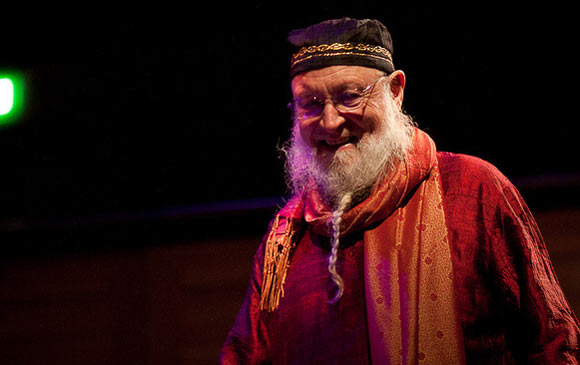
Most Avant-Garde enthusiasts are bound to have come across the awe-inspiring works of Terry Riley, an outstanding American composer born in California on June 24, 1935. Riley is a phenomenal Western classical composer and has devoted his entire career to highlighting the true class of Classical and Avant-Garde music. Inspired initially by the music occasionally affiliated with Jazz and Fusion, Riley has quite brilliantly managed to merge the roots of these genres with several different styles and techniques in a career that has spanned over five decades. Most famously, however, he is known to have been one of the founders of the Minimalist branch of Western Classical music that boomed to life in the 1960s.
Riley gave considerable importance to music theory and compositional literature, and hence enrolled in San Francisco State College earlier on in the 1950s. Here, he would meet and work alongside Seymour Shifrin and Robert Erickson, two of the most renowned and celebrated composers in the classical scene of the time. In 1958, Riley moved on to his graduate studies and received a Masters in Arts degree from the University of California at Berkeley. Once through with his education, Riley began experimenting with a number of different styles and genres, merging them in to complete pieces that were stunningly soothing to the ear. Some of his earliest compositions include Music for The Gift (1963), a musical play that made use of earlier techniques in Riley’s artillery, such as the time-lag accumulator. This was a method of producing multiple layers of echoes in the tracks, and was often used later on in some of Riley’s compositions. However, what was arguably Riley’s most acclaimed work so earlier on was In C (1964), a musical piece consisting of several instruments, written in 53 different musical phrases. Considered to be one of the first works inspiring the Minimalist movement that followed, In C had a severe impact on musical production of the time and is often directly labelled a reason for shifting paradigms in the techniques then being used for classical music composition.
At the end of the 1960s, with the aid of La Monte Young, Riley’s most revered teacher, he decided to transform his production capabilities and methods by abandoning the most popular techniques he used in earlier works, such as the time-lag accumulator. The 1969 album, A Rainbow in Curved Air, featured tracks like Poppy Nogood and the Phantom Band, which stressed more on Riley’s improvisational skills and differed in speed and tempo from common Minimalist tracks earlier on. Riley was, however, to experiment further with his compositional techniques, when in the 1970s, he became obsessed with Indian and Eastern music and inculcated several themes, methods and arrangements in to his works such as Persian Surgery Dervishes (1972) and Shri Camel (1976). Here, the use of the Indian arrangement technique raga is particularly noticeable. Perhaps, the longest collaboration Riley had was with the Kronos Quartet, an ensemble group with whom he composed works like Terry Riley: Cadenza on the Night Plain(1984) and Salome Dances for Peace(1989). What distinguished these works from all previous compositions was the outstanding inclusion of all previous experiments and inventions of Riley, in the sense that the techniques of raga, Minimalist music and American Jazz were included with a particular stress on lyrics.
With the numerous contributions Terry Riley has made in such eloquent style to the Western Classical music of today, he deserves a rightful place amongst the top-tier musicians and composers.